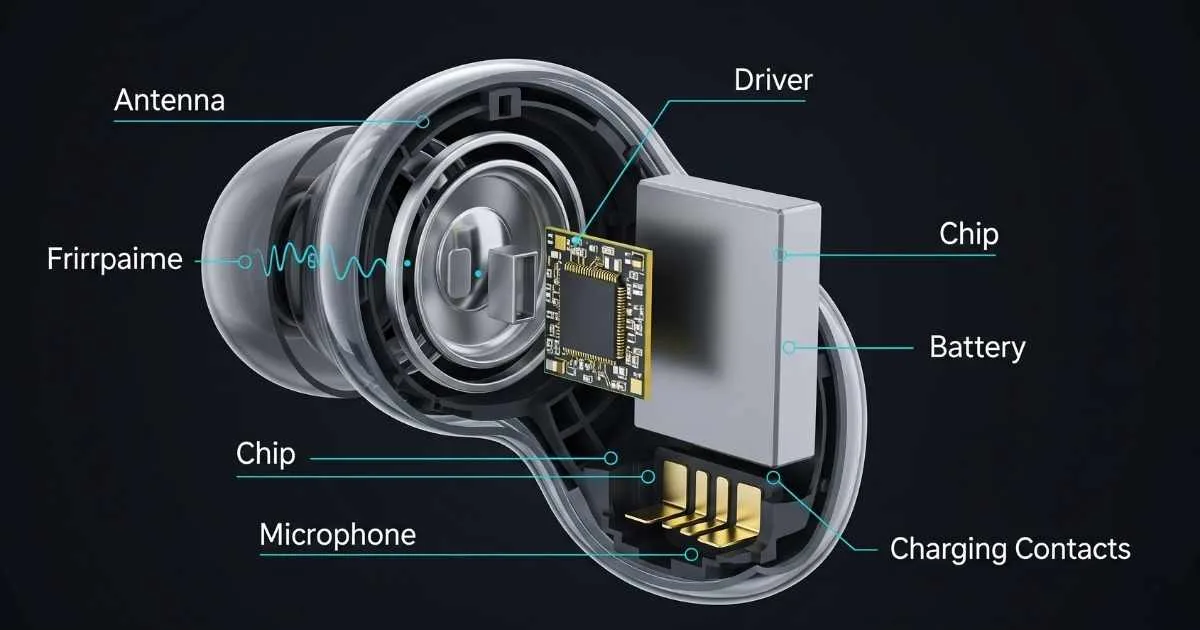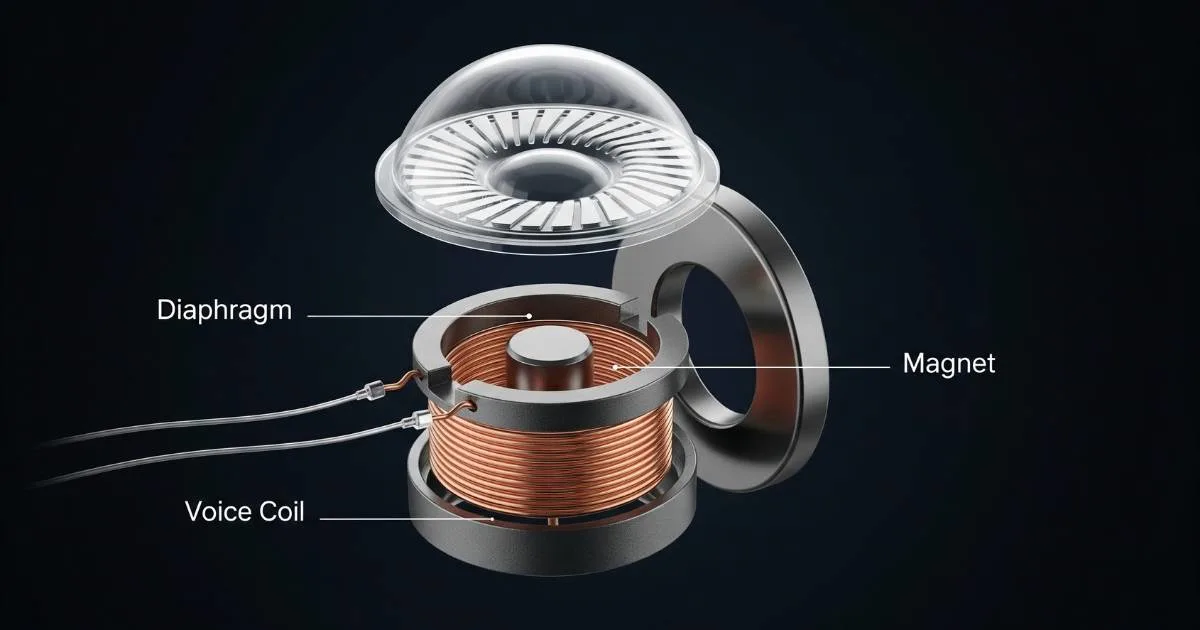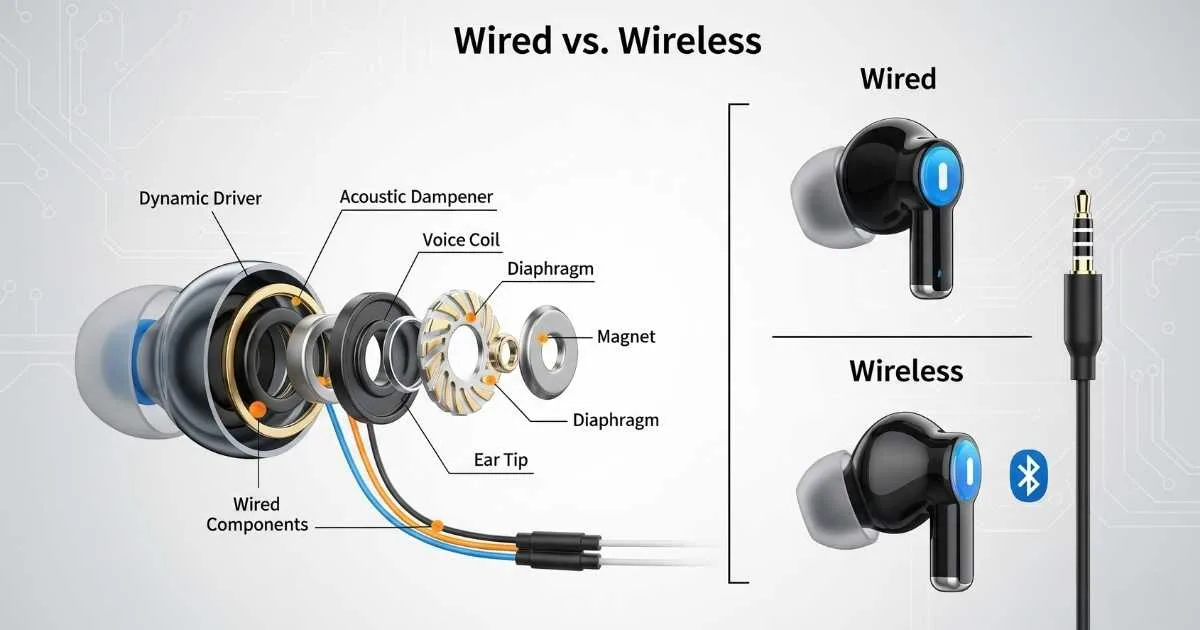Earbuds have become one of the most popular audio gadgets in today’s digital lifestyle. From listening to music and podcasts to making calls or gaming, they offer a compact and convenient way to stay connected to sound anywhere you go.
Unlike traditional headphones, earbuds fit directly inside your ears, making them lightweight, portable, and perfect for everyday use. With options ranging from simple wired models to advanced wireless versions with noise cancellation, earbuds now cater to every need.
In this step-by-step guide, we’ll break down exactly how do earbuds work, the differences between wired and wireless models, how Bluetooth earbuds transmit sound, and answer common questions like waterproof ratings, safety concerns, and troubleshooting tips.

Quick Navigation & Previews
What Are Earbuds Used For?
Earbuds are no longer just about listening to music – they have become multi-purpose audio companions in our daily lives. Here’s how people use them today:
- Entertainment on the Go
Whether it’s streaming music, listening to podcasts, or enjoying audiobooks, earbuds give you personalized sound without disturbing others. Many streaming apps like Spotify and Audible are optimized for earbud use, offering immersive stereo sound. - Calls and Video Chats
Most modern earbuds come with built-in microphones and noise-cancelling features, making them ideal for phone calls, Zoom meetings, or FaceTime chats. This is especially useful for remote workers and students attending online classes. - Gaming
Gamers often prefer earbuds because they are lightweight, portable, and provide quick sound delivery (low latency). Some wireless earbuds now include gaming modes that reduce audio lag, making them suitable for mobile or console gaming. - Fitness and Workouts
Sports earbuds are designed to stay secure during running, gym sessions, or cycling. Many are sweat-resistant or waterproof (with IPX ratings), so they can handle tough workouts. Wireless models are particularly popular since they allow free movement. - Professional and Creative Work
Many professionals, like content creators, editors, and freelancers, use earbuds for video editing, voice calls, and virtual teamwork. The portability makes them a practical choice for hybrid workers who switch between office and home setups.
In short, earbuds are not just an accessory, they are a daily tool for productivity, entertainment, and communication.

Why Are Earbuds So Popular Today?
The surge in earbud popularity isn’t just a trend—it’s backed by technology improvements and lifestyle changes. Here’s why they’ve become essential:
- Portability – Pocket-Sized Sound
Earbuds are extremely compact and lightweight, often fitting into a tiny charging case that slips into your pocket or bag. This makes them perfect for travelers, commuters, and students who want sound on the move without carrying bulky headphones. - Convenience – Wires Are History
With the rise of Bluetooth technology, wireless earbuds allow you to connect instantly without dealing with tangled cords. Quick pairing, touch controls, and voice assistants (like Siri, Google Assistant, or Alexa) make them easy to use while driving, walking, or working out. - Sound Isolation & Noise Cancellation
Modern earbuds are designed to fit snugly inside the ear canal, naturally blocking outside noise. On top of that, premium models offer Active Noise Cancellation (ANC), which uses built-in microphones to detect and cancel unwanted background sounds. This is especially useful in planes, trains, or busy city streets. - Advances in Technology
Today’s earbuds offer features that were once found only in premium headphones:- High-quality sound drivers for better bass and clarity.
- Longer battery life (some last up to 8–10 hours per charge).
- Fast charging cases that provide hours of playback in minutes.
- Smart sensors that pause music when you remove an earbud.
- Lifestyle Compatibility
Earbuds have adapted to modern lifestyles. Students use them for online classes, professionals for work calls, athletes for workouts, and travelers for entertainment. This flexibility makes them a universal choice.
In short, earbuds are popular because they combine convenience, portability, and advanced features into one compact package.
Benefits of Earbuds:
- Comfort: Earbuds are designed to fit snugly in the ear without being bulky.
- Compact: Their small size makes them easy to store and transport.
- Wireless Convenience: With Bluetooth models, there’s no need for tangled wires, making them perfect for exercise or travel.

How Do Earbuds Work? (Step-by-Step)
The technology inside earbuds may look tiny, but it’s actually very advanced. Each component works together to deliver clear, powerful sound straight into your ears. Let’s break it down step by step:
1. Audio Source
The process begins with your device—a smartphone, laptop, tablet, or music player. This is where the sound originates.
- The device stores or streams audio files (like MP3, AAC, or FLAC).
- When you hit “play,” the device prepares the sound data to send it to your earbuds.
Think of your device as the “brain” that creates and sends the sound.
2. Digital to Analog Conversion (DAC)
Most audio today is stored in digital format (1s and 0s). But your ears can only hear analog sound waves.
- Inside your phone or music device, there’s a DAC (Digital-to-Analog Converter).
- The DAC translates the digital code into an electrical signal.
- This analog signal can now move through wires or be transmitted wirelessly to your earbuds.
Without this step, digital music files would just be silent data.
3. Transmission: Wired vs Wireless
Wired Earbuds
- The analog signal flows directly through the cable into the earbuds.
- Since the signal doesn’t rely on wireless transmission, it is very stable and often provides better sound consistency.
- Many audiophiles (serious music lovers) still prefer wired earbuds for this reason.
Wireless (Bluetooth) Earbuds
- Instead of a direct wire, the device uses a Bluetooth chip to convert the signal into radio waves.
- These waves travel through the air and are picked up by a Bluetooth receiver chip inside your earbuds.
- The earbuds then decode the signal back into sound using audio codecs (like SBC, AAC, or aptX).
- This extra process can slightly affect sound quality, but modern wireless earbuds are so advanced that the difference is minimal.
Wireless earbuds add freedom of movement, while wired earbuds provide stability and consistency.

4. Sound Drivers (The Mini-Speakers Inside)
This is where the magic happens.
Inside each earbud is a sound driver, which is a tiny speaker made up of three main parts:
- Diaphragm (thin membrane): Vibrates to create sound waves.
- Magnet: Provides a magnetic field to move the diaphragm.
- Coil (voice coil): Carries the electric current that makes the diaphragm move.
When the analog signal reaches the driver:
- The coil moves inside the magnetic field.
- The diaphragm vibrates at different speeds (depending on the frequency).
- These vibrations create sound waves—the music or voice you hear.
The size and quality of the driver impact bass, clarity, and overall sound experience.
5. Ear Canal Delivery
Finally, the sound waves travel directly into your ear canal.
- Because earbuds sit so close to your eardrum, the sound feels immersive even at lower volumes.
- The snug fit helps block outside noise, improving clarity.
- Some earbuds add noise cancellation technology (ANC), which uses microphones to detect background noise and create opposite sound waves to cancel it out.
This step is why earbuds feel more personal and powerful than regular speakers.

Wired vs Wireless Earbuds: Key Differences
When choosing between wired and wireless earbuds, it often comes down to convenience versus stability.
Quick Comparison Table
| Feature | Wired Earbuds | Wireless Earbuds |
|---|---|---|
| Connectivity | Via 3.5mm audio jack / USB-C / Lightning | Bluetooth pairing |
| Power Source | Powered by the device (no charging) | Built-in rechargeable battery |
| Sound Quality | Stable & consistent (no compression) | Varies by brand, codec & price |
| Portability | Compact but limited by cables | Highly portable & cord-free |
| Interference | Minimal, almost none | Possible signal drops in cheaper models |
Let’s look at the major differences in detail:
1. Connectivity
- Wired Earbuds: Plug directly into your device using a 3.5mm audio jack (or USB-C/Lightning on newer models).
- Wireless Earbuds: Connect via Bluetooth pairing, offering a cord-free experience.
2. Power Source
- Wired Earbuds: Do not need charging—your device powers them directly.
- Wireless Earbuds: Have built-in rechargeable batteries that usually last 4–8 hours per charge, with the case providing extra recharges.
3. Sound Quality
- Wired Earbuds: Provide consistent, stable audio with no compression, making them reliable for high-quality sound.
- Wireless Earbuds: Sound quality depends on Bluetooth version, codecs (SBC, AAC, aptX, LDAC), and brand quality. Premium models can match wired performance, but cheap ones may sound flat.
4. Portability
- Wired Earbuds: Still compact, but the cable can get tangled and limit movement.
- Wireless Earbuds: Extremely portable, with no wires—perfect for commuting, gym, or travel.
5. Interference
- Wired Earbuds: Rarely face interference since the signal flows directly through the cable.
- Wireless Earbuds: May suffer from signal drops, lag, or interference (especially in crowded areas with many Bluetooth devices).
How Bluetooth Earbuds Work: A Quick Look
Bluetooth earbuds work through a process known as pairing. Here’s how it works:
- Bluetooth Pairing: You initiate the connection by pairing the earbuds to your phone or another Bluetooth device.
- Codecs: The audio signal is sent in a compressed format using codecs like SBC, AAC, or aptX, which determine the sound quality and bandwidth efficiency of the transmission.
- Battery & Microphone: Wireless earbuds come with an internal rechargeable battery to power the Bluetooth chip, and often include a microphone for calls or voice assistants.
Are Earbuds Waterproof?
Many earbuds today come with water resistance features, but it’s important to check the specific rating:
- IPX Ratings: Earbuds with an IPX rating (like IPX4 or IPX7) are resistant to sweat and water, but not all are fully waterproof.
- Waterproof vs. Sweatproof: Waterproof means the earbuds can be submerged in water (depending on the IP rating). Sweatproof means the earbuds can withstand sweat exposure, ideal for workouts.
For more on waterproof gear, check out our related post:
Are Earbuds Safe?
While earbuds can be used safely, excessive volume over long periods of time can lead to hearing damage. Here are some tips to keep your ears safe:
- Keep volume under 60%: Listening at lower volumes reduces the risk of hearing loss.
- Use noise-isolating models: These models block out background noise, allowing you to keep the volume at a safe level.
- Take breaks: Give your ears a rest to avoid long-term damage.
Troubleshooting: What If One Earbud Stops Working?
If one earbud stops working, try these troubleshooting steps:
- Check device settings: Make sure your device is correctly paired and volume is balanced.
- Reset Bluetooth: Disconnect and reconnect the Bluetooth connection to refresh it.
- Clean the earbuds: Dirt and earwax can block the sound, so carefully clean the earbuds and mesh.
Conclusion: How to Make Your Earbuds Last Longer
With proper care, your earbuds can last for years while delivering clear sound. Store them in a case to prevent tangling, avoid wrapping cables tightly, and clean the ear tips regularly to remove dirt and earwax. Only expose them to water if they have an official waterproof rating. Following these simple steps ensures better performance, hygiene, and a longer lifespan for your earbuds.
Leave a Reply